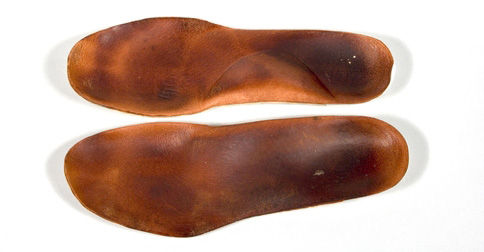Orthotics are specially designed shoe inserts that help provide extra cushioning and correct foot posture. Most people tend to think orthotics are a relatively new modern invention, in fact, they have existed in various forms for centuries.

HISTORY OF ORTHOTICS

The first known case of orthotics can be dated over 2000 years ago. Foot correction device incorporated layers of wool placed inside the sandal to reduce foot strain and fatigue. The insert of wool layers provided extra cushioning and pain relief that comes with long-distance walking.
The first recorded use of arch support was introduced by a man named Everett H. Dunbar from Bridgewater, Massachusetts in 1865. He inserted pieces of leather between the insoles of his shoes which relieved the pain in the arch of his feet.
The first true orthotics debuted in 1905 by Boston Orthopedist Royal Whitman and became popular among the surgeons. Later in 1910, Dr. William Scholl (Dr. Scholl’s) introduced a more lighter and flexible metal support called Foot-Easier.
The 1920s and '30s saw a wave of corrective foot production with the most important developments and advancements were made to the orthotics sciences. At the end of World War II, the U.S government sponsored in researches and projects to improve the performance and quality of foot correction devices. Overtime, corrective shoe became a major aspect of footwear industry.
THE MODERN ERA OF ORTHOTICS

In 1960, a new thermoplastic material was introduce to the market place. This material used the heat to mould the shape of your foot. Orthotics materials became lighter, more flexible and stronger.
By the late 1970s, jogging became popular coming with the massive increase in the use of athletic footwear. The orthotics industry quickly responded to the trend because athletes reported more foot and lower limb injuries.
Orthotics features were added in the athletic shoes including contoured sole inserts, underfoot cushioning and flared heels which reduced injuries and improved comfort among the athletes.
EVOLUTION OF ORTHOTICS
With the coming of technology, orthotics have shifted from profession-dominated footwear to centralised fashion which results in the needs for more scientifically and analytically oriented professional. In the past, practitioners did not receive professional education. Thy were either self-taught or they learned from observation and long working hours with experienced craftsmen.
New technological advancements have provided a more accurate and in-depth knowledge of human being and has acknowledged orthotics as an equal to other areas in the health industry.
Nowadays, we are able to do 3D scanning with our Ipads instead of using Plaster foot casting and the orthotics are either 3D printed or using very lightweight and durable materials which can be alot more comfortable than they use to be and much less bulky.
WHO NEEDS ORTHOTICS?

Orthotics are not limited to a specific group of people. If assessed correctly, the podiatrist can choose the correct device for you to provide foot posture correction from Rearfoot devices, to midfoot devices to just some accommodative devices to give extra comfort when walking, running or playing sports. It all depends on what your feet need and the assessment and the consultation process being the most important element. Lifestyles and footwear choices can also play a huge part in determining what's right for you. So it's best to find a Podiatrist who can asess all aspects of your condition, your lifestyle and your footwear and activity levels to find a device that suit you. In general, orthotics can help to redistribute plantar pressure of the foot through aligning the body and feet as well as stabilise the feet when you walk.
If you have been thinking about orthotics and want to find out what sort of orthotics would suit your feet, please contact us at info@footbodysole.com.au or 8648 7678 or come in store to chat to our friendly staff.








Comments